PPT-Cornell Notes Way of taking notes so that YOU understand the big ideas and can make connections
Author : liane-varnes | Published Date : 2018-10-14
Title Take notes here In short hand abbreviate text language Definitions Important people Repeated or stressed information Diagrams or pictures Reread notes and
Presentation Embed Code
Download Presentation
Download Presentation The PPT/PDF document "Cornell Notes Way of taking notes so tha..." is the property of its rightful owner. Permission is granted to download and print the materials on this website for personal, non-commercial use only, and to display it on your personal computer provided you do not modify the materials and that you retain all copyright notices contained in the materials. By downloading content from our website, you accept the terms of this agreement.
Cornell Notes Way of taking notes so that YOU understand the big ideas and can make connections: Transcript
Download Rules Of Document
"Cornell Notes Way of taking notes so that YOU understand the big ideas and can make connections"The content belongs to its owner. You may download and print it for personal use, without modification, and keep all copyright notices. By downloading, you agree to these terms.
Related Documents

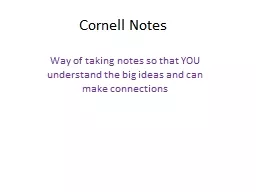
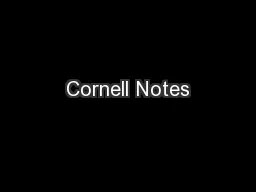
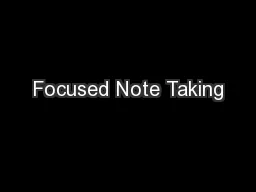
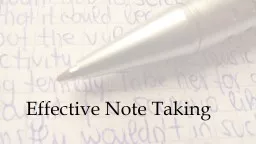

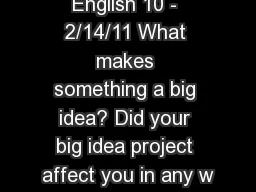


![[READ] - Cornell Notes Notebook: Note Taking with College Ruled Lines, Index and Numbered](https://thumbs.docslides.com/903302/read-cornell-notes-notebook-note-taking-with-college-ruled-lines-index-and-numbered-pages-floral-print-note-taking-system.jpg)
![[EPUB] - Cornell Notes Notebook: Note Taking with College Ruled Lines, Index and Numbered](https://thumbs.docslides.com/903546/epub-cornell-notes-notebook-note-taking-with-college-ruled-lines-index-and-numbered-pages-cherry-blossom-note-taking-system.jpg)
![[DOWNLOAD] - Cornell Notes Notebook: Note Taking with College Ruled Lines, Index and](https://thumbs.docslides.com/905298/download-cornell-notes-notebook-note-taking-with-college-ruled-lines-index-and-numbered-pages-floral-print-note-taking-system.jpg)
![[EPUB] - Cornell Notes Notebook: Note Taking with College Ruled Lines, Index and Numbered](https://thumbs.docslides.com/906427/epub-cornell-notes-notebook-note-taking-with-college-ruled-lines-index-and-numbered-pages-tropical-floral-note-taking-system.jpg)
![[EPUB] - Sloth Cornell Notes Notebook: An 8.5 x 11 cornell notes notepad, cornell notes](https://thumbs.docslides.com/907355/epub-sloth-cornell-notes-notebook-an-8-5-x-11-cornell-notes-notepad-cornell-notes-pad-cornell-notes-book-note-taking-notebo.jpg)
![[BEST]-Cornell Notes Notebook: Cornell Note Taking Notebook for students and teacher with](https://thumbs.docslides.com/978841/best-cornell-notes-notebook-cornell-note-taking-notebook-for-students-and-teacher-with-college-ruled-line-large-size-8-5x11-floral-cover-vol4-100-page.jpg)